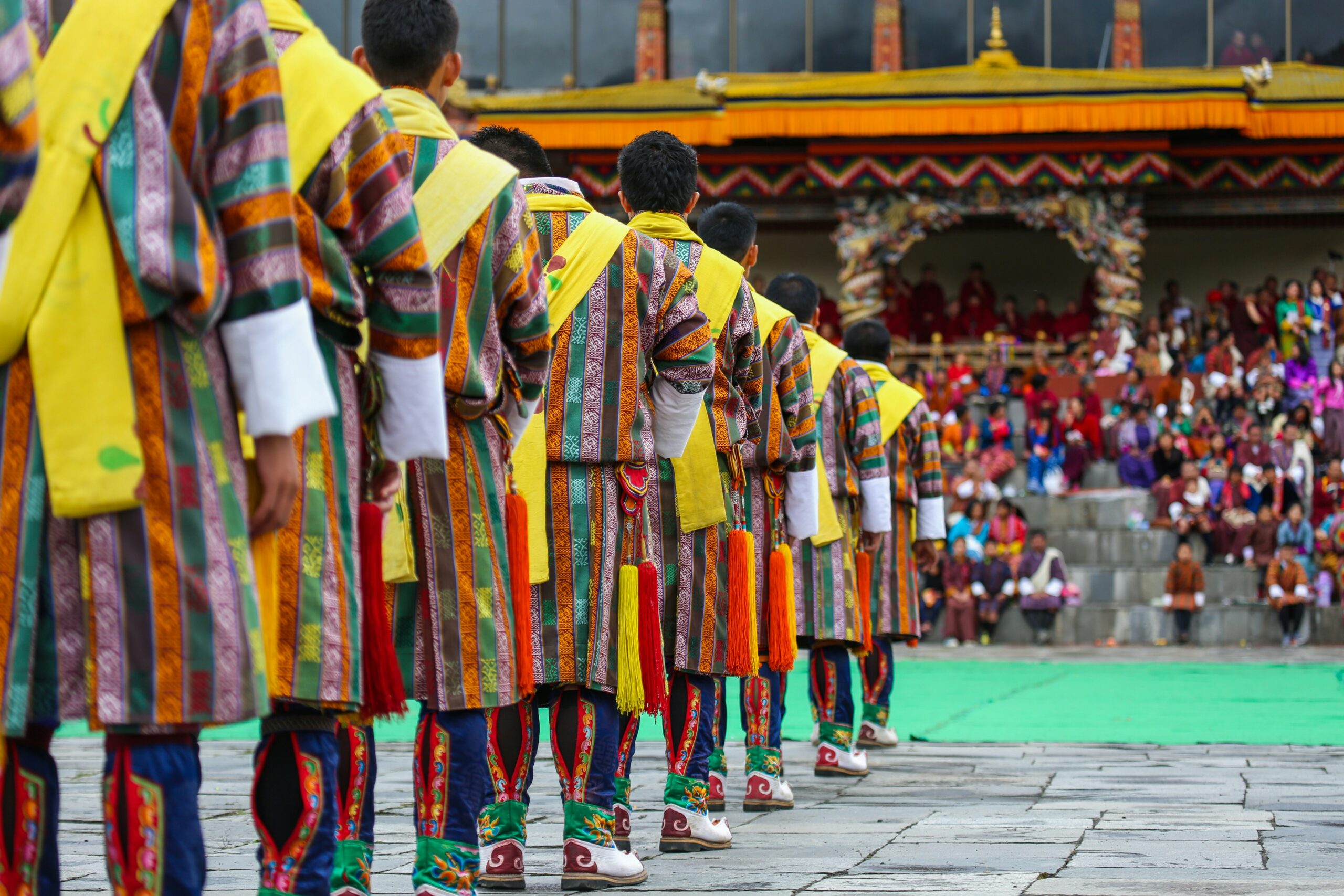Are you visiting Bhutan and want to enjoy Bhutanese music that will give you unforgettable memories and make you feel like a local, whether you go alone or with friends or with your family? It will be very exciting and pleasant due to which the people with you will feel happy in which we will help you completely and it will be our responsibility to make this journey pleasant and comfortable.

Introduction
The Paro Tshechu Festival stands as a beacon of Bhutanese culture, drawing visitors from around the globe to witness its vibrant traditions. At the heart of this festival lies traditional Bhutanese music, a rich tapestry of rhythms, melodies, and chants that elevate the event to spiritual heights. In this exploration, we delve into the intricate components of Bhutanese music, each contributing to the festival’s immersive experience.
Drums (Rnga): The Pulsating Heartbeat

Overview
Drums, known as “Rnga,” form the rhythmic backbone of traditional Bhutanese compositions. Crafted from wood and animal leather, these barrel-shaped instruments resonate with the soul of the festival, infusing it with energy and dynamism.
Role in the Festival

During the Paro Tshechu Festival, the “nga” takes center stage, its reverberating beats guiding ceremonial rituals and dance performances alike. From subdued, meditative rhythms to lively, celebratory cadences, the drums adapt to the varying moods of the festival, setting the tone for each moment.
Cultural Significance
Beyond their musical function, drums hold profound cultural significance in Bhutanese society. They symbolize unity, invoking a sense of communal spirit as festival-goers unite in rhythm and harmony.
Rgaling Horns: Herald of Tradition

The Dungchen: A Symbol of Bhutanese Identity
Among the most iconic instruments of Bhutan is the “dungchen,” a majestic trumpet crafted from copper or brass. Revered for its resounding timbre, the dungchen serves as more than a mere musical instrument—it embodies the essence of Bhutanese identity.
Role in Ceremonies

Horn players, trained from a young age in the intricate art of horn-blowing, play a pivotal role in the festival’s proceedings. Their melodic blasts herald the commencement of ceremonies, signal transitions in dance sequences, and mark significant moments throughout the event.
Cultural Heritage
The tradition of dungchen playing is deeply rooted in Bhutanese heritage, passed down through generations as a sacred duty. As custodians of this ancient art form, horn players uphold a legacy of cultural preservation and spiritual reverence.
Vocalizations and Chants: Echoes of Devotion

Spiritual Essence
Chants and vocalizations form the spiritual backbone of Bhutanese music, infusing performances with an aura of devotion and introspection. Recited in melodic patterns by monks and chant masters, these sacred utterances transcend mere sound, resonating with the innermost depths of the human soul.
Intrinsic Role
Within the context of the Paro Tshechu Festival, chants and vocalizations assume an intrinsic role, transporting attendees to realms of heightened awareness and spiritual transcendence. They serve as conduits for divine communication, bridging the gap between the earthly and the divine.
Emotional Resonance
The emotive power of Bhutanese chants lies in their ability to evoke a myriad of emotions, from reverence and awe to serenity and bliss. Each vocal intonation carries with it centuries of tradition, imbuing the festival with a timeless sense of sacredness.
Stringed Instruments (Dranyen): Melodic Reverie

The Dranyen’s Elegance
A quintessential component of Bhutanese music, the dranyen captivates listeners with its elegant form and enchanting melodies. Featuring a long neck and intricately carved body, this traditional lute transports audiences to realms of poetic reverie.
Expressive Potential
In the hands of skilled musicians, the dranyen becomes a vessel for emotional expression, weaving intricate tapestries of sound that stir the heart and soul. Its melancholic strains evoke feelings of longing and nostalgia, enriching the festival’s musical repertoire with a profound sense of depth.
Cultural Symbolism
Beyond its musical prowess, the dranyen embodies deep cultural symbolism, representing the collective yearnings and aspirations of the Bhutanese people. Through its plaintive melodies, it serves as a poignant reminder of the ephemeral nature of existence, urging listeners to cherish each moment with reverence and gratitude.
Conclusion: Harmony in Diversity
As we conclude our exploration of traditional Bhutanese music at the Paro Tshechu Festival, we are reminded of the profound harmony that emerges from diversity. From the pulsating rhythms of drums to the ethereal chants of monks, each musical element contributes to the festival’s mosaic of cultural expression, uniting attendees in a shared celebration of Bhutanese heritage. In this convergence of sound and spirit, we find not only the essence of the festival but also a testament to the enduring power of music to transcend boundaries and touch the depths of the human experience.

